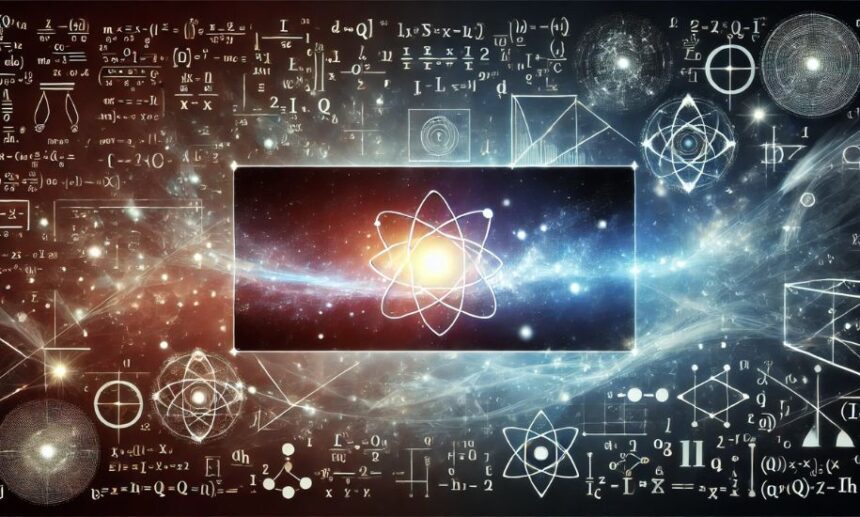Mathematical Physics, a profound and interdisciplinary field, serves as the bridge between the elegance of mathematics and the complexity of physical phenomena. This fascinating domain has shaped our understanding of the universe by providing a structured mathematical framework for the laws of physics. On this journey into Mathematical Physics, let us delve into its essence, applications, and significance. Welcome to Physics Heaven, where we unravel the mysteries of Mathematical Physics.
What is Mathematical Physics?
Mathematical Physics is the study of mathematical structures and techniques applied to solve problems in physics. It merges the rigor of mathematics with the empirical observations of physics, aiming to create precise models and predictions. Unlike pure physics, which often relies on experiments, Mathematical Physics emphasizes theoretical constructs and mathematical proofs.
Historical Development of Mathematical Physics
The history of Mathematical Physics is rich, spanning centuries of scientific inquiry. It began with ancient civilizations using rudimentary mathematics to explain natural phenomena. However, it gained momentum during the Scientific Revolution with figures like Isaac Newton, who formulated the laws of motion and universal gravitation using calculus. Mathematical Physics evolved further with the advent of quantum mechanics and Einstein’s theory of relativity, showcasing its pivotal role in modern science.
Key Areas in Mathematical Physics
1. Classical Mechanics
Classical mechanics involves the study of the motion of objects under various forces. Mathematical Physics provides tools like differential equations and Lagrangian mechanics to analyze and predict motion. These principles are foundational for engineering and space exploration.
2. Quantum Mechanics
Quantum mechanics explores the behavior of particles at atomic and subatomic levels. Mathematical Physics uses linear algebra, complex analysis, and operator theory to model quantum systems. The field has paved the way for advancements in quantum computing and nanotechnology.
3. Relativity
Einstein’s theory of relativity revolutionized our understanding of space, time, and gravity. Mathematical Physics employs tensor calculus and differential geometry to describe phenomena like black holes and the expansion of the universe.
4. Statistical Mechanics
Statistical mechanics deals with systems comprising many particles, linking microscopic behaviors to macroscopic properties. Probability theory and statistical methods are central tools in Mathematical Physics, influencing fields like thermodynamics and materials science.
Mathematical Physics in Modern Applications
Mathematical Physics extends beyond theoretical constructs, impacting various practical domains:
- Technology: Advances in Mathematical Physics have driven innovations in semiconductors, lasers, and renewable energy.
- Medicine: Techniques like imaging and radiation therapy rely on mathematical models rooted in physics.
- Cosmology: Mathematical Physics helps decipher the universe’s origins, structure, and ultimate fate.
Tools and Techniques in Mathematical Physics
Mathematical Physics employs a wide array of mathematical tools to solve complex problems. Some of these include:
- Differential Equations: To model dynamic systems such as planetary motion.
- Linear Algebra: Used in quantum mechanics and other fields.
- Group Theory: Essential for understanding symmetries in physics.
- Numerical Methods: For computational simulations of physical phenomena.
Challenges and Future Prospects of Mathematical Physics
Despite its achievements, Mathematical Physics faces challenges, including:
- Bridging gaps between different branches of physics using unified mathematical approaches.
- Developing computational methods for solving increasingly complex equations.
- Expanding our understanding of dark matter, dark energy, and quantum gravity.
The future of Mathematical Physics holds promise, especially with advancements in artificial intelligence and quantum computing. These technologies are expected to revolutionize how we solve physical problems mathematically.
Why Mathematical Physics Matters
Mathematical Physics is not just about equations and models; it represents humanity’s quest to comprehend the cosmos. By marrying mathematics and physics, it offers unparalleled insights into the workings of nature. Here at Physics Heaven, we celebrate the elegance and significance of this field.
Conclusion: The Essence of Mathematical Physics
In conclusion, Mathematical Physics is a cornerstone of scientific exploration, weaving together the abstract beauty of mathematics with the tangible truths of physics. Its contributions have shaped modern science and continue to unlock the universe’s mysteries. Join us at Physics Heaven as we explore the boundless possibilities of Mathematical Physics.
Frequently Asked Questions (FAQs) about Mathematical Physics
What is the difference between Mathematical Physics and theoretical physics?
Mathematical Physics focuses on the use of rigorous mathematical methods to solve physical problems, while theoretical physics is broader and includes conceptual models that may not always be mathematically rigorous.
What careers are available in Mathematical Physics?
Careers in Mathematical Physics include roles in academia, research institutions, technology firms, data science, quantum computing, and engineering sectors.
How does Mathematical Physics contribute to technology?
Mathematical Physics drives technological advancements through the development of models for semiconductors, lasers, medical imaging devices, and quantum computing technologies.
Which mathematical tools are essential in Mathematical Physics?
Key tools include differential equations, linear algebra, tensor calculus, group theory, and numerical methods for simulations.
Can Mathematical Physics solve real-world problems?
Yes, Mathematical Physics provides models and solutions for real-world challenges in engineering, medicine, cosmology, and technology.








